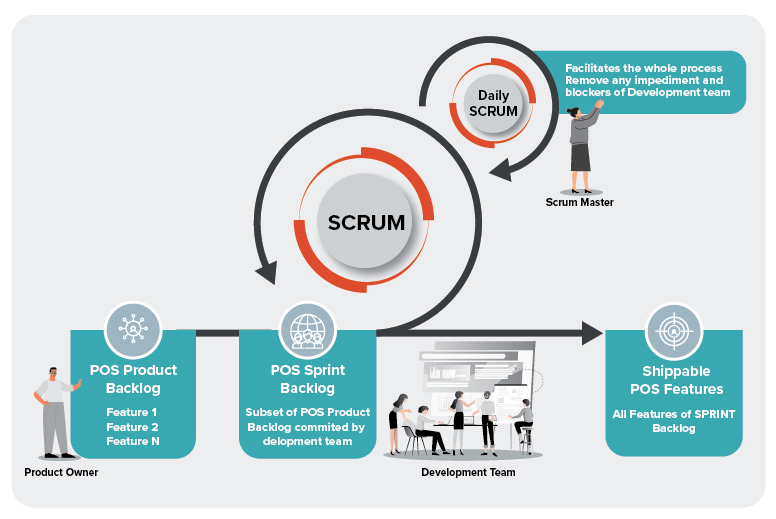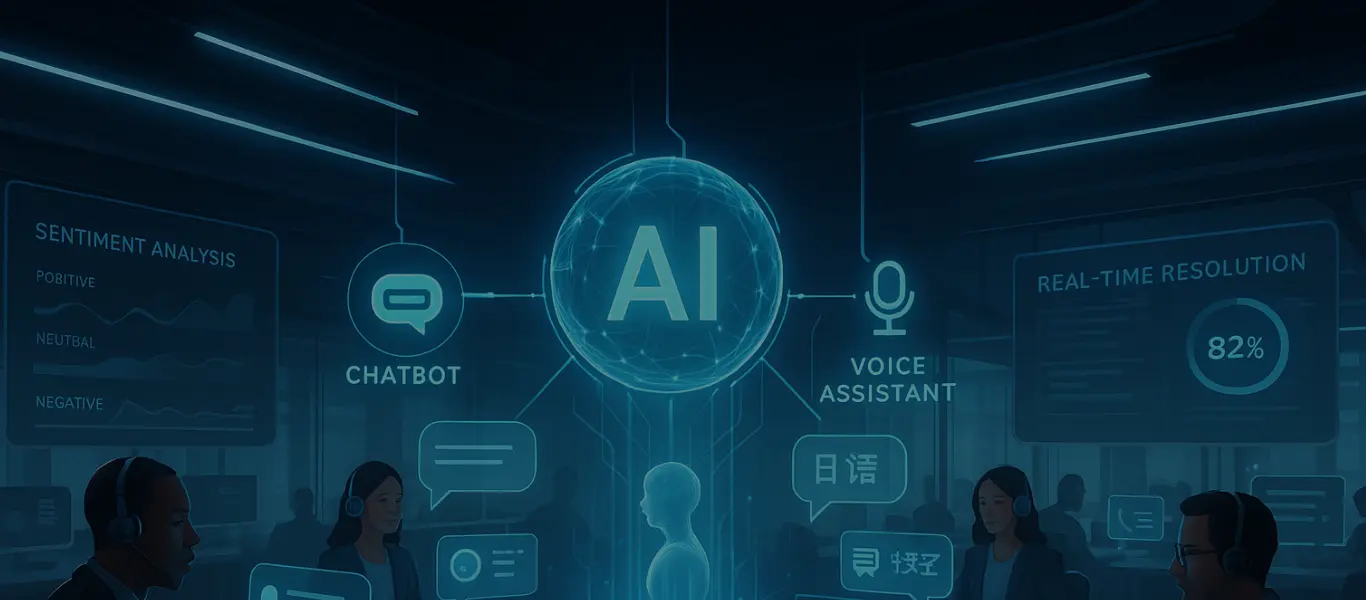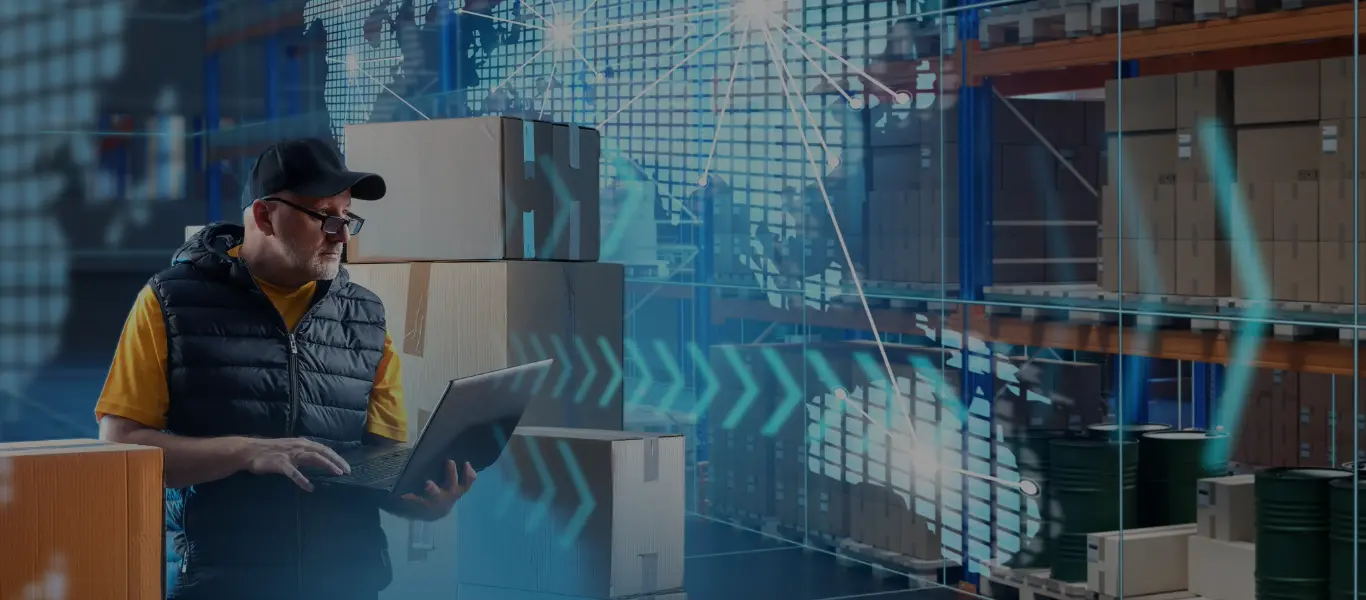Retail is continuously evolving, and the pandemic has accelerated the rate of change even more. Shoppers changing behavior is in large part the reason for the change – the shopping patterns, consumption behavior and its impact on market dynamics all have a tremendous impact on the industry.
To keep pace with such dynamic requirements, retailers need to have organization, technology and processes in place. An Agile approach in technology project can help retailers keep up with the changing market conditions. In the retail industry, requirements change frequently, final outcomes require multiple iterations and changes in the scope must be addressed along with the need for faster delivery to market.
According to Boston Consulting Group (#1), Agile project delivery accelerates time-to-market and new product delivery by 2 to 4 times. At the same time Zippia.com (#2) states that Agile projects have 64% success rate compared to 49% of a traditional waterfall project. Furthermore, since agile helps retailers support customer requirements quickly, companies adopting agile have experienced an average 60% increase in revenue and profit.
What Is Agile Methodology?
Agile methodology is a set of software development principles that emphasizes flexibility, speed, and collaboration. It was created to aid teams in producing software more quickly and effectively. But now it is used to execute projects across different industries.
The core idea behind agile methodology is that it is better to iterate and improve upon a product incrementally, rather than trying to get everything right up front. This means that an agile team will start by developing a minimum viable product (MVP) and then continuously add new features and refine the product based on feedback from users rather than attempting to define all the requirements and features of a product before beginning work.
One of the key features of agile methodology is the use of short “sprints” or iterations, during which the team focuses on a specific set of tasks. At the end of the sprint the team evaluates its performance and modifies its plan for the following sprint in light of its findings.
Agile teams also prioritize cooperation and communication, and they employ a range of tools and strategies to make sure that everyone on the team is focused on the same objectives. These may include regular stand-up meetings, pair programming, and the use of agile project management tools.
Why Should Retailers Consider Agile For Technology Implementations?
Agile methodology can be a powerful tool for retailers looking to digitally transform their businesses.
Some of the ways that agile can support retail digital transformation include:
- Faster time to market: Agile software development cycle allows retailers to quickly build and launch new products or features, helping them stay competitive in a fast-moving market. Retailers can quickly build and deploy eCommerce platforms, mobile apps, in-store kiosks to improve customer experiences online and in stores.
- Improved customer satisfaction: Agile teams are able to gather and incorporate customer feedback throughout the agile development cycle process, which can help ensure that the final solution has the functionality and features that meet the needs and expectations of shoppers.
- Increased collaboration: Agile methodologies encourage collaboration and communication among team members, helping to foster a sense of teamwork and shared ownership of the project. It is especially important in a digital transformation project where multiple teams and stakeholders may be involved. SkillNet’s experience is that in omnichannel enablement projects and multiple teams and integration points Agile comes in handy for better collaboration and project success.
- Greater flexibility: Agile software development process enable retailers to quickly respond to changes in the market and adapt to customer needs, helping them stay competitive in a rapidly evolving digital landscape.
According to Thierry Hay, president of ecommerce at BestBuy, before Agile project delivery they used to release 3 major and 6 minor releases on the eCommerce site. However, after agile project delivery methodology, BestBuy had released 85 net new features on ecommerce and technology within a year across the organization. Among these 85, some were significant initiatives that would have been multi-year projects in the past. [Source: Scrum Alliance (#3)]
- Better quality: By continuously testing and refining the product throughout the agile software development process, agile teams can help ensure that the final product is of high quality and meets the needs of end users.
Dave Evans CTO at BestBuy Canada also says that moving to agile project delivery for the eCommerce has reduced the defects found in production by 60%. Effectively faster feature release, more deployment and less quality issues. [Source: Scrum Alliance (#3)]
Overall, agile methodologies can help retailers stay competitive, successfully navigate the challenges of digital transformation and remain competitive in a rapidly-changing market.
How Should Retailers Incorporate Agile Methodology Into Their Initiatives?
There are several steps that retailers can take to incorporate agile methodology into their initiatives:
By following these steps, retailers can effectively incorporate agile methodology into their initiatives and drive more successful outcomes.
- Adopt an agile mindset: Agile requires a change of mindset and culture, and it is important for retailers to embrace agile values such as collaboration, flexibility, and continuous improvement.
- Create cross-functional teams: Agile teams should includes people with a variety of knowledge and experience, including business analysts, designers, and developers.
- Adopt an agile mindset: Agile requires a change of mindset and culture, and it is important for retailers to embrace agile values such as collaboration, flexibility, and continuous improvement.
- Create cross-functional teams: Agile teams should includes people with a variety of knowledge and experience, including business analysts, designers, and developers.
- Use sprints and iterations: Agile teams should work in short sprints or iterations that focus on specific tasks. At the end of each sprint, the team should review their progress and adjust their plan for the next sprint based on what they have learned.
- Gather and incorporate customer feedback: Agile teams should actively seek and incorporate feedback from customers and other stakeholders throughout the SDLC (Software Development Life Cycle) process.
Agile project management tools can be used to manage tasks, prioritize work, and track progress against project milestones. Tools such as Jira and Trello, help teams plan, track, and collaborate on agile projects. By using these and other systems in an agile way, retailers can drive growth by quickly and efficiently identifying and addressing opportunities to improve their technology ecosystems and better serve their customers.
Challenges Of Agile Methodology
Retailers can face a number of challenges while adopting the Agile methodology. These include:
- Complexity – Agile approach can be complex when an organization (or project team) is trying it for the first time. It may require a significant amount of training and support
- Collaboration – Agile approach requires strong collaboration among team members and this can be difficult if they are co-located or do not have good communication
- Expectations – It can be challenging to manage customer expectations when using agile methodologies as it requires frequent releases which the customer is not able to understand and accept
- Risk management – As agile methodology’s nature is rapid software development and delivery which involves high risk, organizations may need to develop strategies for identifying and mitigating risks
- Quality assurance – Agile approaches often involve frequent releases. which makes it difficult to ensure the quality of the final product. It may be necessary to develop strategies for ensuring quality in an agile environment.
Agile Approach For Retail Digital Transformation
SkillNet has been working with retailers since 1996. Based on our experience and tool sets, we not only help clients navigate through such challenges but also support the client teams to easily adopt Agile.

SkillNet follows the SCRUM framework (#4) during implementation. The diagram above showcases the POS implementation model in SCRUM framework. The same process is followed for other retail and ecommerce system implementation.
Agile is designed to be flexible and responsive to change and helps retailers to support shoppers’ changing demands by adopting technology quickly and efficiently. Contact us if you would like to discuss how we have helped retailers adopt Agile.
References
- Agile at scale – https://www.bcg.com/capabilities/digital-technology-data/agile/agile-at-scale
- Agile statistics by Zippia https://www.zippia.com/advice/agile-statistics/
- Scrum Alliance BestBuy Canada Agile transformation case study https://resources.scrumalliance.org/Article/best-buy-canada-makes-agile-transformation
- SCRUM Framework an overview https://resources.scrumalliance.org/Article/overview-scrum-framework






 Engenharia
Engenharia







